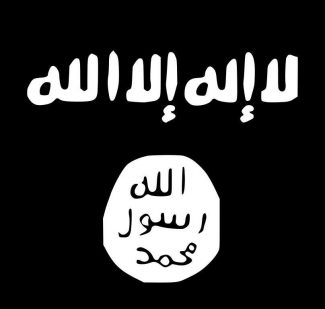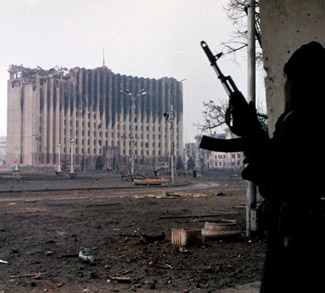Haiti is no stranger to political violence, as a history of occupations, political fragility, and natural disasters have long interrupted the advent of stable governance. Over decades of compounding security and humanitarian crises, Haiti now faces a severe gang issue. Embedded in the communities, these groups have exploited the gap caused by instability and surged to record strength.
By the end of 2022, the United Nations estimated that 60% of Haiti’s capital, Port-Au-Prince, was controlled by gangs numbering nearly 100. This projection came after an October announcement from UN Secretary General Antonio Guterres that urged the international community to provide military assistance to Haiti. This call for assistance mirrored the request from Haitian Prime Minister Ariel Henry, who acknowledged that ongoing protests and gang violence was hindering the distribution of essential supplies like fuel, medicine, food, and water.
Haiti’s Distinctive ‘Gangs’
The use of the word ‘gang’ fails to fully capture the scope and intensity of the armed groups struggling for power. Through war-like battles, ‘gangs’ have claimed a high number of civilian casualties and have effectively hindered all aspects of daily life. Their tentacles go well beyond the commercial sector and are deeply rooted in politics. These groups also fill an economic need, as they provide violent services that allow the ruling elites to exercise control over strategic areas.
Operating more like a mafia, the mercenary groups are routinely called upon to provide electoral support, suppress opposition, and to secure business deals. To do so, they resort to means such as bribery, vandalism, massacres, assassinations, and kidnappings. Driven predominantly by profit, the existing structures of inequality incentivize paid violence. Most commonly, kidnappings and ransoms are used to fund their activities. According to human rights organizations, there were over 1,200 kidnappings in 2021. This total is more than twice the number reported in the previous year, and five times more than in 2019. The UN has also reported a 35% increase in killings and a 45% increase in sexual violence as gang control continues to expand.
Unlike ‘regular gangs,’ these armed groups are no longer limited to set neighborhoods or turfs. The increasing overlap and competition has forced many groups within Port-au-Prince to align themselves with either G9 an Fanmi e Alye or GPEP. The former – often simply known as G9 – has gained a lot of attention recently as their public stunts have gained international attention, as well as their affiliation to former President Moïse. The founder of G9, Jimmy “Barbecue” Cherizier, was accused of working with the Moïse Administration to plan and execute the horrific La Saline massacre when he was a police officer in 2018. InSight Crime has estimated that prior to Moïse’s assassination, G9 was receiving approximately half of its funding from the government. As much as the collusion is motivated by economic and survival needs, the presence of paramilitary groups within the fabric of Haitian life has a history dating back to the nation’s infancy.
A Turbulent Military History
Haiti has had a complicated history with security entities, whether the army or the police. After gaining independence in 1804, the country was divided by a civil war that exposed deep class divisions and ambitious political maneuvering. Haiti was formally unified in 1820 as the Republic of Haiti, until Faustime Soulouque declared himself emperor three decades later. In the interim period, which Bob Corbett called a “curious and disastrous series of governmental revolutions,” Haitian politics was locked in a cycle of violence as factions within the elites raised funds and armies to swing politics in their favor.
Despite having coordinated armed forces, it was not until the US occupation from 1915-1934, when Haiti saw the creation of their first professional military force. Spurred by a variety of fears, Woodrow Wilson sent in the Marines, who upon landing became responsible for reintroducing stability in Haiti. During this time, pro-American sentiment and stability was manufactured through public works projects, tax collection, treasury management, and amending the constitution. The training that the Marines provided turned the gendarmerie from a constabulary force to a national institution. To reflect the new and wider responsibilities, the military took on the new name Gard d’Haiti in 1928. It should be noted that this evolution coincided with FDR’s good neighbor policy, which withdrew US forces from the island.
Paramilitary practice began in earnest under Francois “Papa Doc” Duvalier who once again ‘rechristened’ the military in 1958. The new model united all branches of military and police under the name Force Armee d’Haiti (Fad’H). Duvalier, who declared himself president for life, created the Tonton Macoute the following year in 1959. The special operations unit, also known as the Volunteers for National Security, were a group of Duvalier loyalists who acted outside the law to crack down on any opposition. The Duvalier dynasty ended in 1986, but their legacy remained as Fad’H and former-members of the Tonton Macoutes attempted to suppress voter turnout during the 1987 elections. Unable to stop “slum priest” Jean-Bertrand Aristide from becoming the first democratically elected president, the armed Duvalierists attempted at coup to prevent Aristide from taking office.
A US-led intervention re-instated Aristide as president in 1994. Fearing another coup, Aristide disbanded the military. In its place, the Haitian National Police was created to act as the “sole state security force mandated to tackle criminal violence.” In an attempt to counter the elites’ deep pockets and their influence within the armed forces, Aristide created the ‘chimères’ to act as a counterbalance. This group comprised for predominantly young and poor men who were armed and tasked with assisting Aristide as he sought to consolidate his political power. Despite all this, Aristide’s fears were eventually realized in 2004, when he was ousted by a coup d’etat.
The US-backed Michel Martelly succeeded President Rene Preval, becoming president in 2011. Recently, he was in the news alongside former prime ministers Laurent Lamothe and Jean Henry Ceant as the United States and Canada placed sanctions on the three men for their suspected involvement in gang financing. In addition to running on a campaign promise to reinstate the military, he is also credited with creating the political party which would later be accused of hand-picking Jovenel Moïse. Critics of the Parti Haïtien Tèt Kale (PHTK) claim that the party holds a monopoly on political violence and disguises kleptocracy as community mobilization. Moïse’s 2016 succession only seemed to validate these claims as during his presidency his opposition was met with pushback from G9.
Looking Ahead
The assassination of President Moïse and the subsequent ascent of acting Prime Minister Ariel Henry has created even more chaos and discontent. Since assuming office in July 2021, Ariel has failed to hold any election, improve the economy, or stop the violence. According to the World Bank, the Haitian economy has contracted for three consecutive years and it’s estimated that 65% of households have experienced a deterioration in their incomes. Income inequality has continued to stoke the flames and fuel anger. A Global Initiative report from 2022 found that the richest 20% in Haiti hold over 60% of the nation’s wealth, while the poorest 20% hold approximately 1%. This wealth gap has been further exacerbated by an inflation rate of nearly 27% on average consumer prices.
Despite having several specialized units, the Haitian National Police are under-equipped, under-paid and understaffed. According to Pierre Espérance, the force entered 2023 with approximately 10,000 officers, meaning that the country faces a policing ratio of 1 officer per 1,200 citizens. As the police continue to lose control, the attrition rate is likely to steadily climb, while extra-constitutional groups are likely to grow. Given the tumultuous and intertwined history of paramilitary groups in politics, the reach of traditional counter-gang strategies will likely be limited. Moreover, sanctions on officials suspected of financing and encouraging the use of armed groups to advance their own interests is still too recent to provide any substantive feedback.




